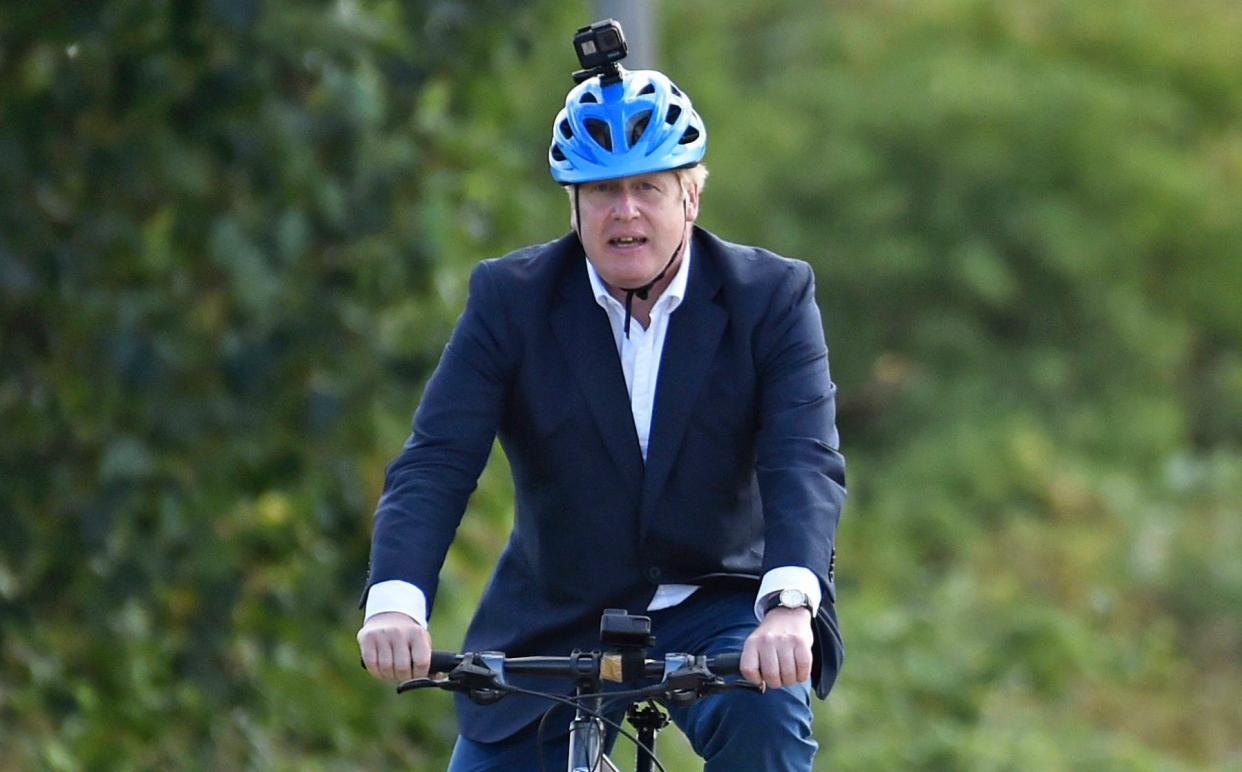Accidents quadruple on cycle lane hailed by Boris Johnson

Serious accidents involving cyclists have quadrupled on a bicycle lane hailed by Boris Johnson as proof low traffic neighbourhoods (LTNs) work.
The route through Chiswick and Hammersmith in West London saw eight cyclists needing lengthy hospital treatment after they suffered serious injuries last year, despite only two a year being seriously hurt in the three years before the lane was introduced.
Meanwhile, 19 cyclists were slightly injured in 2022, nearly double the average nine people slightly injured in 2017 to 2019 when there was no segregated bike lane.
It is the first time a full year of accident data, collated by Transport for London (TfL), has been released since the lane was fully opened. It has allowed a direct comparison with statistics from when there was no bike lane.
The marked increase in serious and slight injuries has renewed calls for improvements to the two-mile bike lane.
Although the route is said to have seen an increase in cyclists using it, the data suggests key junctions where vehicles cross the lane have become accident blackspots.
One of the worst accidents took place in October last year, when an air ambulance was scrambled to Chiswick to take a seriously injured woman to a major trauma centre after her bicycle ended up under the wheels of a lorry.
A serious injury is classified as requiring a lengthy spell in hospital with injuries such as broken or crushed bones, internal injuries, severe cuts and concussion. A slight injury includes whiplash and cuts.
Bi-directional section
Road safety campaigners have expressed concern the bi-directional section of the lane on King Street in Hammersmith - where cyclists travel in both directions despite the road being one way for motorists - presents challenges for cyclists.
Simon Munk, of the London Cycling Campaign, said although the figures needed to be compared with any increase in numbers using the lane, the rise in serious injuries “only underlines that the councils and TfL urgently need to look at some of these junctions to avoid further collisions.”
In 2021, Mr Johnson, the then prime minister who has championed LTNs, wrote the forward to a report in which he “celebrated” his “radical” transport policy insisting it created “safe spaces” for cyclists.
The 39-page document praised the Chiswick section of the cycle lane stating TfL data showed up to 2,700 people a day used it.
Shortly afterwards, the Telegraph did a spot count which found only 1,026 cyclists, less than half the number cited in the report, used the route on that occasion.
Helen Cansick, TfL’s head of healthy streets investment, said they were “closely monitoring” the route, adding “there is not yet enough data to draw reliable conclusions”.
She insisted their “robust cycle count data” showed the introduction of the lane had led to an increase in cyclists using it.
‘It is a safe cycleway’
“We monitor all new cycle routes closely and will continue to work with the borough to implement any changes needed,” she said.
A spokeswoman for Hounslow Council, which covers the Chiswick section of the route, said the lane had been subjected to road safety audits which show “it is a safe cycleway”.
A Hammersmith and Fulham Council spokesman said the “safer cycle pathway” in King Street is “hugely popular” with 2,800 people using it every day.
He stressed that safety is a “huge priority”, adding: “We will continue to work with TfL to monitor the route and make further improvements for pedestrians, motorists and cyclists.”
A spokesman for One Chiswick, a local group fighting the cycle lane amid fears it causes traffic congestion and is unsafe, said: “The cycleway has proven to be more dangerous than even we feared. Serious accidents are up fourfold. According to the councils’ and TfL’s cherry picked data cycling is only up 25 per cent. So, serious collisions are far higher than they should be given the paltry increase in numbers using the lane.”

 Yahoo News
Yahoo News 
